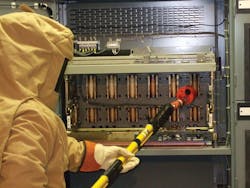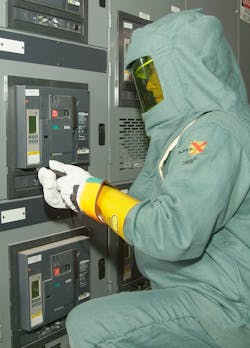Four Key Changes Proposed for the 2018 Edition of NFPA 70E
Although not yet complete, indications are the 2018 Edition of NFPA 70E, Standard for Electrical Safety in the Workplace, will introduce entirely new workplace requirements for electrical workers. While many proposed changes will clarify existing definitions or processes, others are more considerable. Among the modifications proposed, four important new requirements will have a significant impact on how electrical workers approach each and every job. Let’s review those now.
Planning for job safety
The new edition of the 70E standard will likely include expansion and clarification of Job Safety Planning and Job Briefings. Electrical workers are familiar with the requirement for a job briefing, which has been in place in prior editions of the standard, but mandatory job safety planning has not been detailed until now. Before starting any job that involves working with or around electrical equipment, the contractor or employee in charge would be required to complete a job safety plan and conduct a job briefing with the employees involved in that job. As currently proposed in the new edition of the standard, Sec. 110.1(I)(1) would now require job safety planning that:
1) Is completed by a qualified person,
2) Is documented, and
3) Includes:
a. A description of the job and individual tasks,
b. Identification of the electrical hazards associated with each task,
c. A shock risk assessment for tasks involving a shock hazard,
d. An arc flash risk assessment for tasks involving an arc flash hazard, and
e. Work procedures involved, special precautions, and energy source controls.
Related
How to Improve Electrical Safety Compliance by 40% of More
Successful Safety Training Strategies
Don't Let Deadlines Push You to Make Bad Decisions
Job safety planning must be conducted by an employee with proper training who is knowledgeable in the construction and operation of the equipment and the work that will take place. He or she must also be trained to identify and avoid the associated hazards.
Incident reporting
As part of this newly expanded requirement, the technical committee also made an adjustment to how electrical workers report electrical incidents. When included in the 2018 edition, a new Section in Art. 110 will also require the electrical safety program to contain elements that address the investigation of electrical incidents. Electrical incidents comprise events or occurrences that result in, or could have resulted in, a fatality or injury.
To decrease complacency and improve electrical workplace safety, the technical committee selected the term “incident” instead of “accident.” By requiring an “incident” investigation, not only do electrical events that result in injury require an investigation, but so do close calls or near misses that “could have resulted in injury.”
Risk assessments
Another change associated with the newly required Job Safety Planning proposal is the requirement of risk assessments for every job. The 2018 edition of the standard is expected to make both shock and arc flash risk assessments mandatory.
As part of the Job Safety Plan, a qualified employee will be required to implement a risk assessment procedure that will identify hazards, assess risks, and implement risk controls. It’s important to note there are two types of risk assessments — one for shock and one for arc flash. A qualified person must analyze the electrical system to identify the shock hazards and arc flash hazards that are present. The arc flash hazard may be quantified by performing an incident energy analysis or, if the equipment fits within specific parameters, the tables included within the standard may be used. The updated standard will also provide expanded tables to help electrical workers determine the likelihood of an event based on the situation or task.
Once the initial level of risk is ascertained, the new edition of the standard will direct workers to apply the hierarchy of control methods, found in Sec. 110.1(G), to mitigate risk. These methods include:
1) Elimination — This step focuses on eliminating the hazard to create an electrically safe work condition.
2) Substitution — Workers can opt to substitute less hazardous equipment, such as non-electrical or battery operated tools.
3) Engineering controls — These options can automatically reduce risk, such as ground fault circuit interrupter (GFCI) protection and installed barriers.
4) Awareness — This step requires that people be alerted to the hazard, which can include installing permanent or temporary signs, labels, and barricades.
5) Administrative controls — This method involves planning processes, training, permits, job planning, and work procedures intended to create safer work conditions.
6) Personal protective equipment (PPE) that is available when needed — The last resort method is PPE, which includes insulated tools, clothing, and gloves, and is intended to reduce the severity of injury if an electrical event were to occur.
Standardizing PPE
PPE cannot prevent an electrical incident from happening, but it can mean the difference between a survivable burn and death. For that reason, it is critically important that the level of protection offered by PPE is properly understood. The new standard will likely require ratings/markings to help electrical workers understand and select high-quality PPE that is appropriate for the hazard.
Another proposed change in the 2018 edition of the NFPA 70E will introduce new requirements for conformity assessment and markings on PPE. If included in the final draft, all PPE manufacturers would be required to provide a declaration of conformity for their product(s). The compliance assessment may be conducted by a third-party organization or by the manufacturer, although the same evaluation criteria are applied in either case.
In addition, the standard will also include new PPE marking requirements. In Sec. 130.7(C)(14)(c), the standard dictates that all suppliers or manufacturers of PPE must provide the following information on or with PPE:
• Name of manufacturer.
• The product performance standards to which the product conforms.
• Arc rating where appropriate for the equipment.
• One or more identifiers such as model, serial number, lot number, or traceability code.
• Care instructions.
This information can be included on the equipment, on the smallest unit container, or within the manufacturer’s instructions, such as in the product packaging. Care instructions must be included for all clothing because some items may require special cleaning and care.
By requiring conformity assessments and proper markings for PPE, the newest edition of NFPA 70E will help standardize the market expectations for this important equipment. This will give electrical professionals added confidence in the quality of the PPE they’re using as well as help them select the right PPE for the job.
Helping us help ourselves
As with every update to NFPA 70E, the release of the 2018 edition should introduce changes that will have a notable impact on the electrical workplace. Job safety planning and risk assessments will add new processes and time to every job and may require additional training as well. Not everyone welcomes change, but it’s important to remember these modifications are intended to keep us all safer. With these new requirements enforcing safer work practices and PPE we can rely on, NFPA 70E will continue to help electrical workers ensure their own safety on each and every job.
West is a senior staff engineer, P.E., with Schneider Electric. He has worked in the electrical industry for more than 25 years, chairs the board of directors for Whitewater Valley REMC, is a NAFI-certified fire and explosion investigator, and is a member of the Electrical Section of NFPA. He currently serves as a principal member of NEC Code Making Panel No. 8 and NFPA 70E. He can be reached at [email protected].

